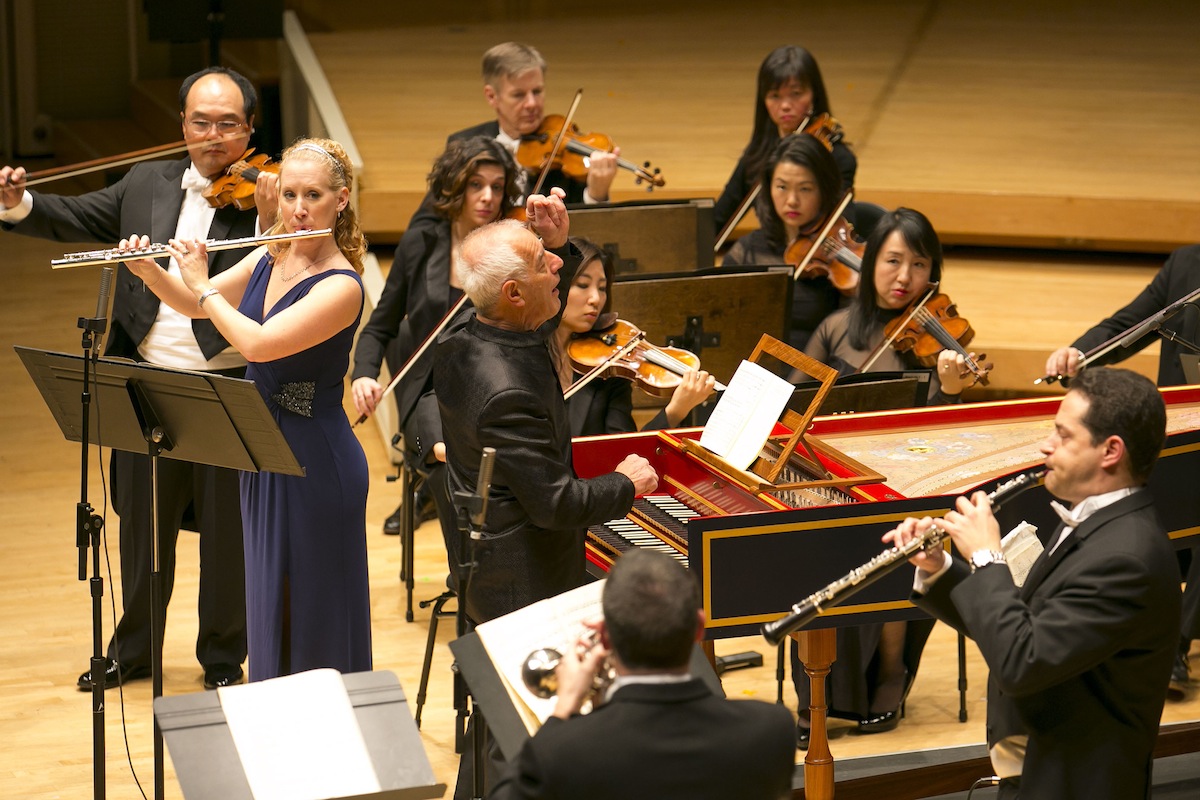CSO’s Brandenburgs make for a mixed bag of Bach

There were ample reasons to be mildly skeptical about the Chicago Symphony Orchestra’s traversal of all six of Bach’s Brandenburg Concerts at Symphony Center under the leadership of Nicholas Kraemer, a conductor highly regarded for vivid performances informed by impeccable scholarship.
A mix of Brandenburgs and Orchestral Suites, for example, would have made for a more intriguing mix, but it would also violate the virtuous “completist” programing scourge that shows no sign of relinquishing its grip on classical presenters. Since the concertos are designed for intimate settings, projection was bound to be issue, most notably with harpsichord. And finally, what kind of historically informed consistency could Kraemer bring to an ensemble whose traditions seem so antithetical to his own?
At the very least Kraemer’s readings proved the value of hearing the six in one sitting. With the special circumstances of their creation as a commission from Christian Ludwig of Brandenburg, the variety of instrumentation alone is enough to sustain interest. Nor is there a precise parallel with other Bach anthologies such as the Well-Tempered Clavier, Art of Fugue, or the solo cello suites, all of which were theoretical or pedagogical works not intended for public performance either as individual pieces or in sets.
But in the end Kraemer had limited success Thursday night confronting other obstacles, making for an evening of delights and dull patches served up in roughly equal measure.
Kraemer’s record suggests that he fully embraces the view of musicologists that Baroque works with mixed instrumentation should revel in contrasts, even at the risk of violating modern norms of balance. But the DNA of the CSO puts a high value on seamless homogenization, creating an unresolved friction with Kraemer’s aesthetic.
The solo passages of oboist Eugene Izotov and horn players Daniel Gingrich and James Smelser in the First Concerto were neatly turned out, but their reticence failed to ignite a spark of conversation with the accompanying voices.
More problematic here and in the Second and Fourth concertos was the timid playing of the upper strings in tutti passages. As a whole there was an attempt to embrace some strictures of period practice, including minimal vibrato and shorter note values, violinist Robert Chen providing a workable model for the other string players.
But there was also a misguided belief that Baroque playing demands a dainty touch, and this approach eliminated the solo/ensemble tension so vital to the concerto genre in any period. With the violins walking on eggshells, dynamic variance throughout was flat. The maestro’s work with Music of the Baroque suggest that this was not his preference, but limited rehearsals are not nearly enough to reverse ingrained institutional bias.
Similar issues arose in the Fourth Concerto, though lovely duos by flutists Jennifer Gunn and Louise Dixon and bristling pyrotechnics by Chen lifted the performance considerably. The absence of spirited tuttis also served to restrain instrumental color and dynamics in the Second Concerto, an especially unfortunate result considering the inherent contrasts of the four solo instruments (flute, oboe, violin, trumpet). Note-perfect renderings of the fiendish clarino trumpet part are rare, and Christopher Martins’s occasional blotches did little to diminish an otherwise thrilling ride.
The Sixth Concerto fared somewhat better, due in part to the absence of an accompanying string body in Bach’s score. Weijing Wang and Catherine Brubaker were the silky toned and perfectly matched viola soloists, and the churning, repetitive arpeggios created a bracing momentum akin to modern minimalism.
Likewise the Third Concerto is more chamber music than concerto, with only one player on each of nine parts and all participating in virtuosic interplay. This was easily the most compelling performance of the evening, brimming with sparkle and bustle, with first violinist Stephanie Jeong leading the charge with infectious intensity. One could sense the players responding directly to each other rather than a central leader. It was oddly counterintuitive to note that the most vivid and colorful reading of the night came from a string ensemble, sans woodwind or brass supplements.
The heart of any Brandenburg survey is the magnificent Fifth Concerto in D major, and Kraemer’s reading was compelling in many respects. Chen and Gunn were stylish and nimble, but harpsichordist Mark Shuldiner easily stole the show. The stereotype of Bach as a brilliant but conservative artist falls apart in this inventive work, which is not only history’s first keyboard concerto, but also contains the first substantial composer-written cadenza. Fans of this work wait with baited breath for the arrival of the cadenza, and Shuldiner didn’t disappoint. His rapid-fire passagework was breathtaking, yet he didn’t fail to trace connections with themes heard earlier in the first movement.
With all of the caveats contributing to a less than memorable evening, special kudos to the sensitive and well-balanced continuo threesome of cellist John Sharp, double bassist Alex Hanna, and Kraemer himself on harpsichord.
The program will be repeated 8 p.m. Friday and Saturday, 3 p.m. Sunday and 7:30 p.m. Tuesday. cso.org; 312-294-3000.
Posted in Performances
Posted Nov 21, 2014 at 4:42 pm by Jeff Collins
I found the tempos of several fast movements to be ridiculously fast. The musicians of the Chicago Symphony Orchestra can perform baroque music extremely well with the right conductor or with no conductor for that matter. I sincerely hope that Mr. Kraemer never comes back to the CSO.